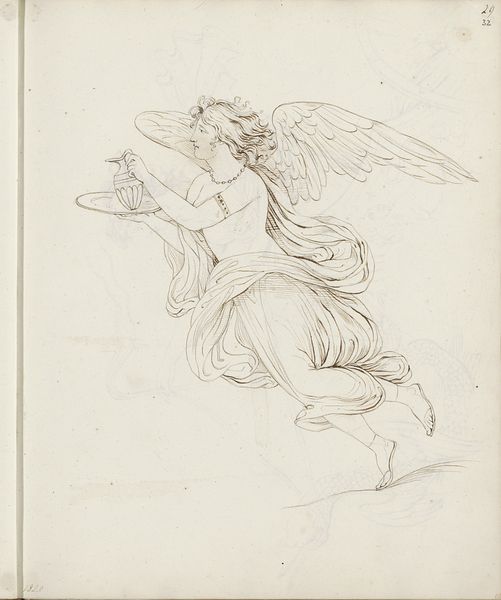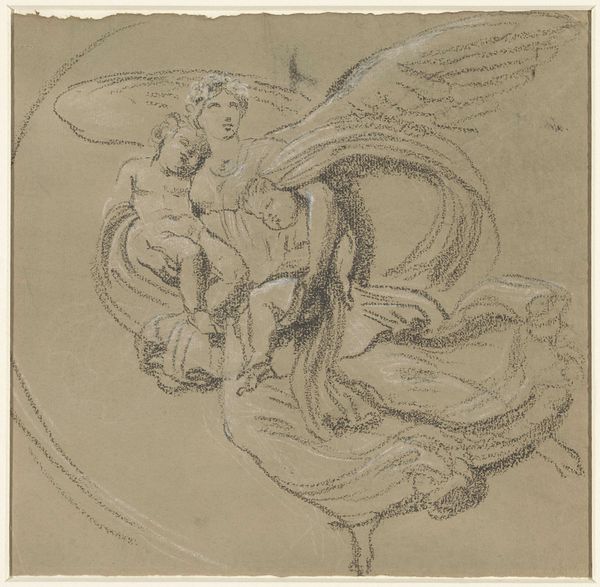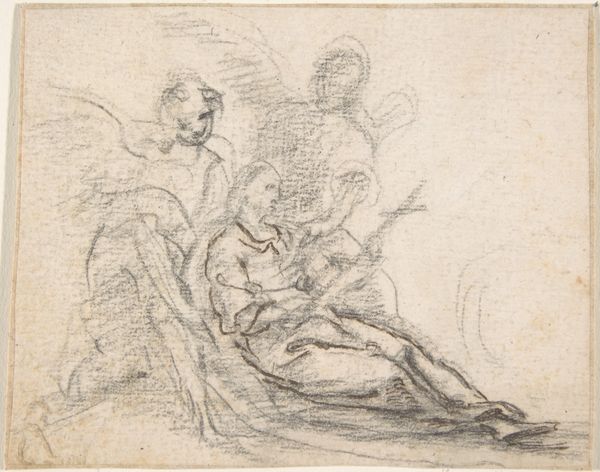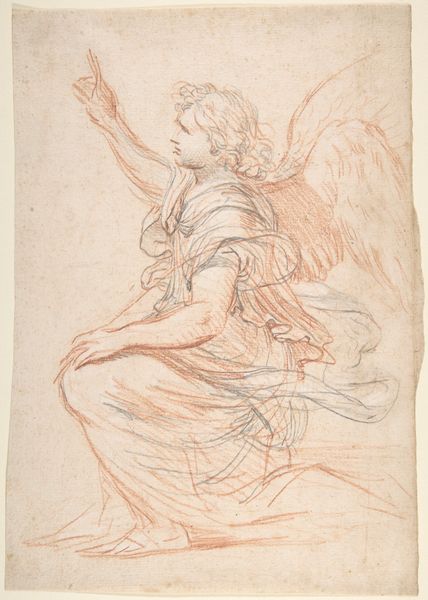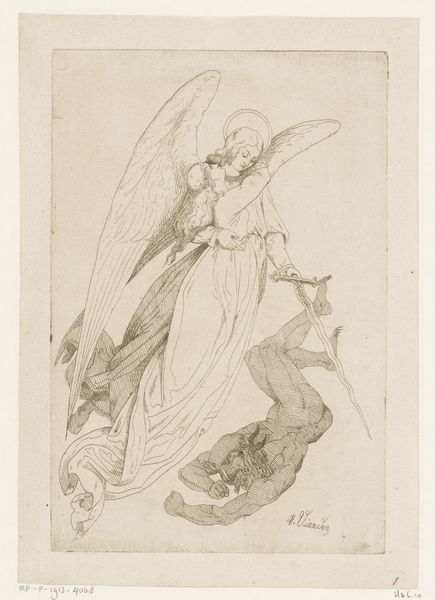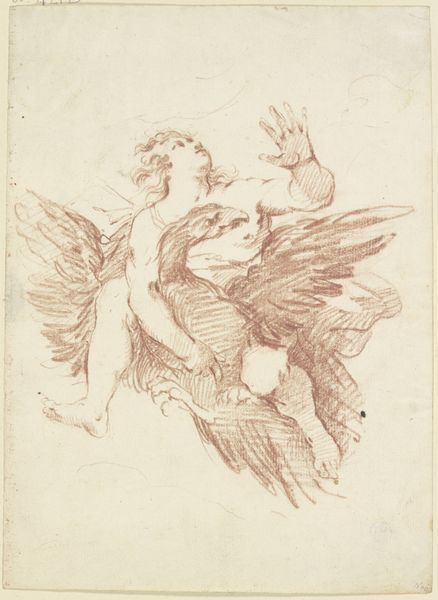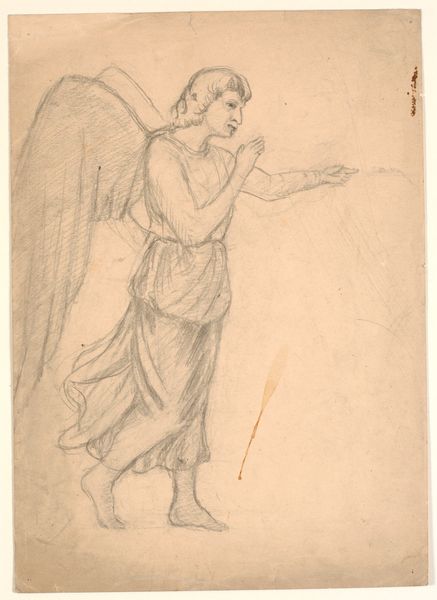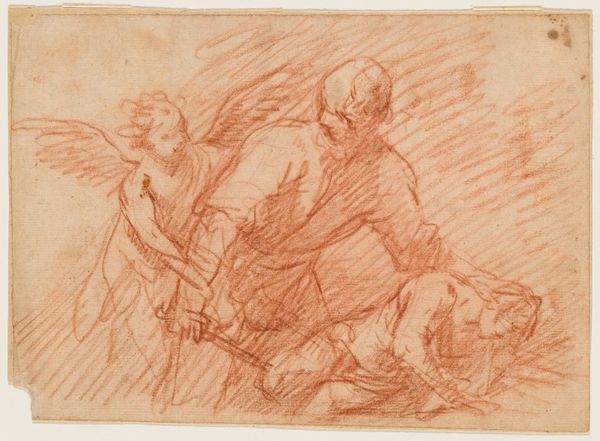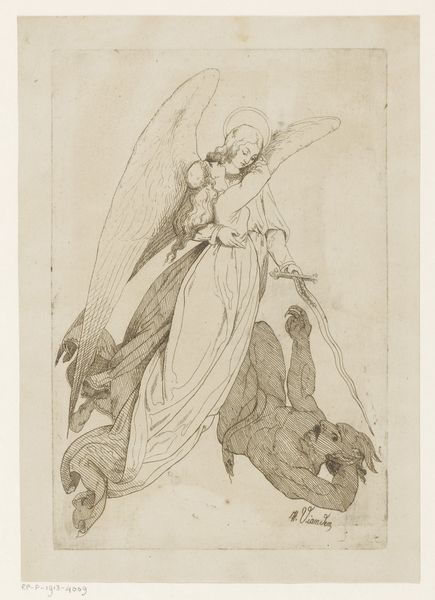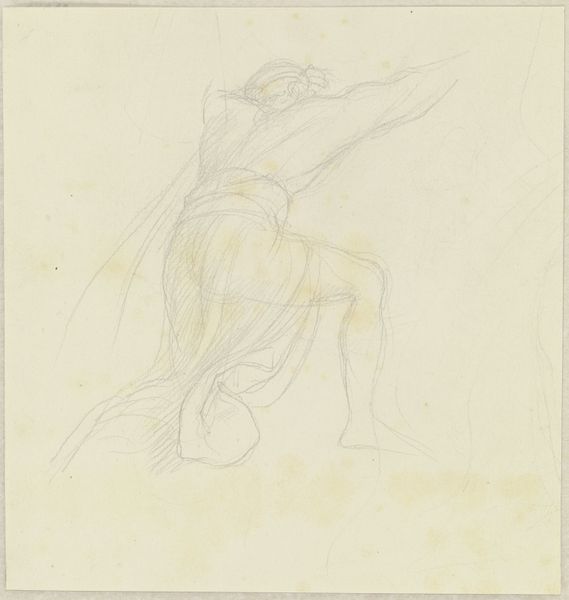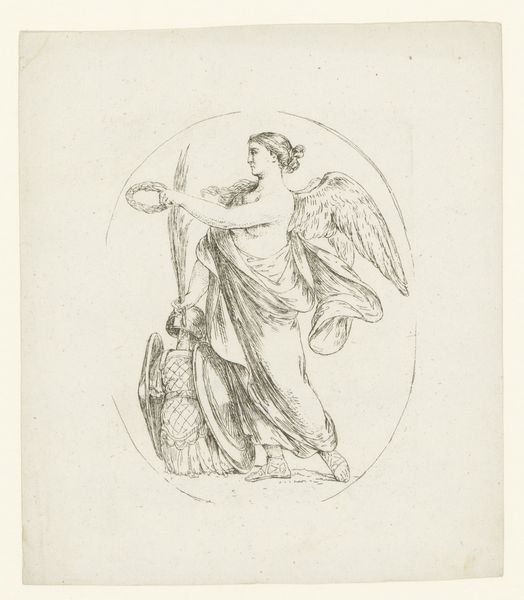
Copyright: Public Domain
Editor: Here we have Johann Heinrich Tischbein the Elder's "The Annunciation" from 1766. It’s a delicate pencil drawing. It feels like a preliminary sketch, very light and airy. What story can you tell me about its cultural impact? Curator: Given the date, we see this work operating within the tail end of the Baroque period, a time when religious art was a significant public and institutional force. Notice the dynamic pose of the angel, typical of Baroque drama. How might the social function of such a piece have changed as religious patronage evolved during the Enlightenment? Editor: That's interesting. I guess artists started looking for different ways to express themselves as the church's power lessened? Curator: Exactly. And consider how Tischbein situates himself within the visual language of power. The annunciation was often a state commission or ecclesiastical one. In replicating such a sacred, significant historical scene through such ephemeral, and almost invisible media, what can we infer? Editor: So, doing it as a drawing rather than a grand painting is a statement in itself. Curator: Precisely! The choice of medium becomes a political act. It's no longer just about religious devotion, but a reflection on the shifting sands of power and the role of the artist in representing these shifts to the public, would you agree? Editor: Yes, absolutely. Seeing it as more than just a religious image really opens it up. Curator: Indeed. And by viewing “The Annunciation” as a product of social forces, rather than simply an expression of faith, we gain insight into both the art of the 18th century and its societal context. Editor: This has totally changed how I see this drawing! I'm going to pay more attention to materials going forward. Thank you!
Comments
No comments
Be the first to comment and join the conversation on the ultimate creative platform.
